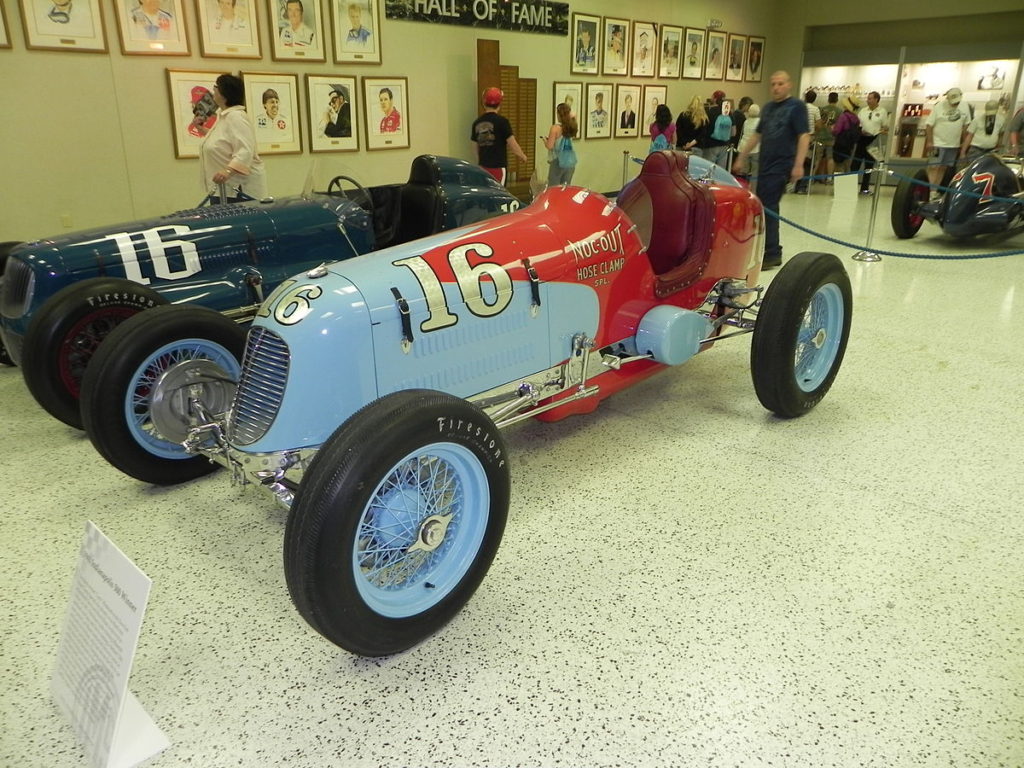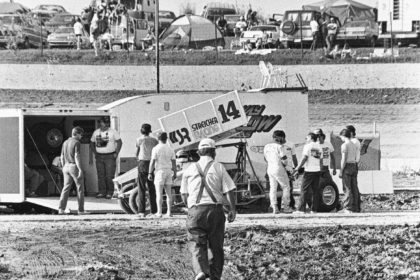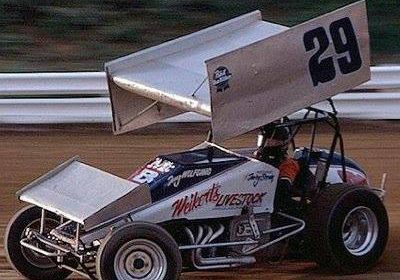There are a few iconic, one-of-a-kind racecars that stand out in racing history. Some of these cars are famous for their structure, such as Tom Johnson’s wicked sprint car designs of the 1980’s and Kenny Weld’s “Back to the Future” sprint car in 1988. Others are remembered because of their performance, such Weld’s legendary No. 112 “Batmobile” ground-effects modified that shook the dirt-car modified world in it’s one and only race. While other cars are remembered most for their unique paint schemes and designs, such as Sammy Swindell’s #1 TMC sprint car and Dale Earnhardt’s #3 Goodwrench machine.

It’s impossible to calculate the number of racecars that have competed in racing events through the years, and equally impossible to determine the winningest racecar of all time. There are several cars that many believe to be the winningest machines ever, but statistics of this nature are nearly impossible to verify. That said, there are some statistics that are virtually bulletproof, and will likely have records that stand forever. For instance, when considering any racecar that has ever been built, you will find only one that has won both an Indianapolis 500, as well as a NASCAR Championship title. This accomplishment is unthinkable in today’s world, as the vast differences in the design of the machines that compete in these disciplines is staggering. For that reason, it’s safe to say that no machine is likely to ever accomplish this feat again. In fact, without NASCAR’s venture into championship car racing in 1952, this feat would likely have never been possible at all.
In 1952, and briefly in 1953, NASCAR ventured into open wheel championship car racing when they launched their Speedway Division sanctioning events similar to those being sanctioned by the AAA’s popular championship car division, which sanctioned the largest open wheel events in the nation, including the Indianapolis 500. Although NASCAR’s newest series featured cars visually similar to those competing in AAA sanctioned events, NASCAR’s unique rules package created subtle differences in their construction. NASCAR kept the basis of their rules package the same, as all of the machines that competed in the NASCAR Speedway Division were required to feature an open cockpit, open wheel championship car design, but with an added twist. Championship cars competing on the AAA circuit traditionally featured Offenhauser engines throughout the 1950’s, but these engines were banned in the Speedway Division as NASCAR attempted to appeal to their stock car fan base by requiring teams to utilize stock car engines in their racers. This resulted in the utilization of a wide variety of engines in the series. In fact, of the 21 cars that entered the Darlington 200 in May of 1952, the series’ inaugural event, 10 different engine manufacturers were featured including Ford, Mercury, Chevy, GMC, Olds, Hudson, Studebaker, Nash, DeSoto and Cadillac, which was used by winner Buck Baker.
The 1952 NASCAR Speedway Division’s schedule consisted of seven races, beginning in Darlington on May 10th and concluding in Langhorne, Pennsylvania on June 29th. Notable participants in the series included 1950 Indianapolis 500 competitor Dick Rathmann, as well as fellow AAA competitor Al Keller, with Keller winning the Atlanta 100 in June. Other tracks featured on the circuit included Martinsville, Rochester New York’s Monroe County Fairgrounds, Charlotte Motor Speedway, Lakewood Speedway, and Heidelberg Raceway in Pittsburgh.

Martinsville Speedway photo.
Buck Baker was crowned series champion at the conclusion of the 1952 season after finishing in the top five in five of the series’ seven races. Despite Baker’s stellar on track performance, the machine he piloted throughout the season holds the most significant place in history as his 1952 championship elevated his racecar to a status that will likely never be matched.

The history of Baker’s racer begins with its construction by the Wetteroths for car owner Lou Moore in preparation for the 1941 Indianapolis 500. Floyd Davis was the initial driver for the #16 car, and qualified in the seventeenth position for the 500. On lap 72, Davis came in for a pit stop and was relieved by Mauri Rose. Rose had started the race from the pole in a Maserati entry but dropped out after 60 laps due to spark plug issues. Moore was apparently dissatisfied with Davis’ performance up to this point in the 500, and ordered the driver change. Rose then drove through the field and went on to win the 1941 Indianapolis 500. Both Rose and Davis were credited as “co-winners” of the 500, marking the last time that “co-winners” were crowned Indianapolis 500 champions. This same machine would be piloted to a fifth-place finish in the 1946 500 by Joie Chitwood and Sam Hanks, and 19-year-old Troy Ruttman made his first Indianapolis 500 start in the car in 1949. The history of the car is unknown in the few years leading up to its reemergence in the Speedway Series in 1952, but it’s superiority and winning record certainly continued at the hands of Buck Baker on his way to the 1952 Speedway Division title. The car was later restored to the condition in which it won the 1941 500, and was put on display in the Indianapolis Motor Speedway Museum for several years.

NASCAR Speedway Series events were paired with NASCAR Sportsman Division events in 1953, but interest in the series quickly faded, and lead to the series being quietly discontinued after the fourth event of the season at Champion Speedway in June of ‘53. Race winners in 1953 included Wally Campbell, Wayne Alspaugh, Dick Frazier and eventual champion Pete Allen. A total of 19 different drivers competed across the four events.
Although the Speedway Series stands as one of many small chapters in racing history, it’s ties to larger moments in history, and the unique circumstances in which it created, add intrigue to the history books of both NASCAR and open wheel racing alike. Not many people would believe that NASCAR once ventured into open wheel racing, or that one racecar was both an Indianapolis 500 and NASCAR series champion, but both are true, and serve as fantastic reminders of the ways in which racing history can sometimes intertwine across vastly different disciplines.


